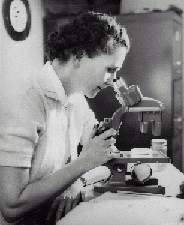Section III: Taking Action
Continuation of an article about Rachel Carson and her environmental activism.
While working for the Fish and Wildlife Service from 1935 to 1952, Rachel Carson knew of the early studies of DDT's lasting effects on the environment. She was familiar with pesticide research at Patuxent, a governmental research refuge in Bowie, Maryland. In 1945 she proposed an article to Reader's Digest about the dangers of DDT. The article was turned down.
What finally led Carson to take a larger role was a letter from her friend, Olga Owens Huckins, in January 1958. She and her husband owned a two-acre private bird sanctuary in Duxbury, MA, which was hit in 1957 by pesticides sprayed by planes to control mosquitoes. Because many of their birds died, an irate Mrs. Huckins wrote a detailed letter to The Boston Herald and sent a copy and a note to Rachel Carson. Years later Carson wrote to Huckins saying that Huckins' personal letter begging her to find someone in Washington who could help had convinced Carson to write the book.
Planning her next book to be about humans and ecology, Rachel Carson began assembling background information which was evidence of the dangers on the environment by man's use of pesticides.
Still unconvinced as to whether or not to stop her other work and campaign against the use of pesticides, Rachel Carson became involved in another case. Prominent residents of Long Island's Nassau and Suffolk counties, including Archibald B. Roosevelt and ornithologist Robert Cushman Murphy, were suing to exclude their lands from government DDT spraying to control the gypsy moth. Because no one yet had sufficient evidence of the relationship between spray planes and a poisoned environment, and because federal and state agricultural officials and the chemical industry were making a case for spraying, no action was taken. Rachel Carson saw this case as a classic example of citizens' right not to have their environment poisoned. "She too saw that the struggle must be more widely publicized; here an expert and respected writer could be of immense help in alerting the public to the dangers it faced."
Her initial step was to write to E.B. White, a staff member of The New Yorker who was concerned with America's natural resources. She shared the Long Island case with him and suggested that it would make a great article for The New Yorker. White wrote back saying that he could not do it and suggested that she should consider writing the article herself.
Since White was not going to write an article, Carson made up her mind. "No one else seemed to be in sight to take on the job; certainly no one else with her qualifications -- her scientific background, her passionate love for the natural world, and her stature in American letters."


